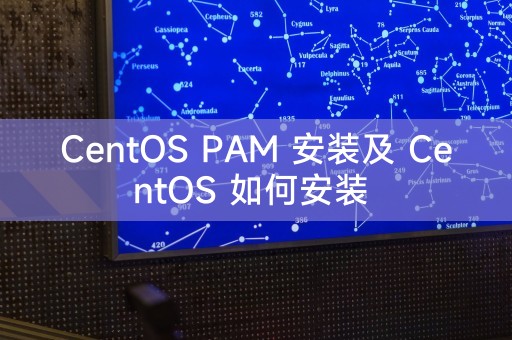
php editor Baicao brings you a brief introduction to CentOS PAM installation and how to install CentOS. PAM (Pluggable Authentication Modules) is a flexible authentication framework that can be used to enhance system security. This article will give readers a detailed introduction to how to install PAM in CentOS systems and how to perform installation operations in CentOS systems. Whether you are a novice or an experienced administrator, this article will provide you with concise and easy-to-understand guidance, allowing you to easily master the installation and use of PAM.

Installing PAM in CentOS is very simple, you can follow the steps below:
1. Open the terminal Or log in to your CentOS server via SSH.
2. Log in as root user or a user with administrator rights.
3. Run the following command to update the package list:
sudo yum update4. Run the following command to install PAM:
sudo yum install pam5. You will be prompted to confirm the installation, press y and Enter to continue.
6. After the installation is complete, you can verify that PAM is installed correctly by running the following command:
pam-config --listIf the installation is successful, you will see to a list of PAM modules and configuration files.
The installation process of CentOS is relatively simple. The following is a basic installation step:
1. Download the CentOS ISO image file, you can download it from the CentOS official website Find the latest version of the ISO image file.
2. Create a bootable USB drive or DVD and write the ISO image file to it.
3. Insert the USB drive or DVD into the computer where you want to install CentOS, and start the computer.
4. During the startup process, choose to boot from a USB drive or DVD.
5. Enter the CentOS installer and you will see a series of installation options and settings.
6. Select the appropriate language, keyboard layout, and time zone.
7. Configure disk partitioning, you can choose manual partitioning or use automatic partitioning.
8. Set root password and other user accounts.
9. Select the package to install, you can choose different options like server or desktop environment.
10. Wait for the installation to complete, the installation process may take some time depending on your computer performance and the software packages selected.
11. After completing the installation, restart your computer and follow the on-screen instructions to set up.
In LINUX, you can use command line tools to manage the system. Some of the commonly used commands include:
- ls: list the directory files and folders.
- cd: Switch to another directory.
- mkdir: Create a new directory.
- rm: Delete a file or directory.
- cp: Copy files or directories.
- mv: Move files or directories.
- grep: Search for a specific string in a file.
- chmod: Change the permissions of a file or directory.
- chown: Change the owner of a file or directory.
- ssh: Remotely log in to another computer via SSH.
These commands are only a small part of LINUX, but they can help you better manage and use the system.
The above is the detailed content of CentOS PAM installation and CentOS how to install. For more information, please follow other related articles on the PHP Chinese website!




